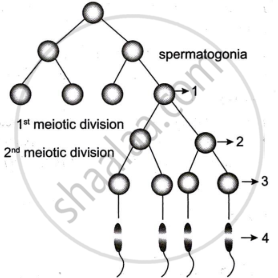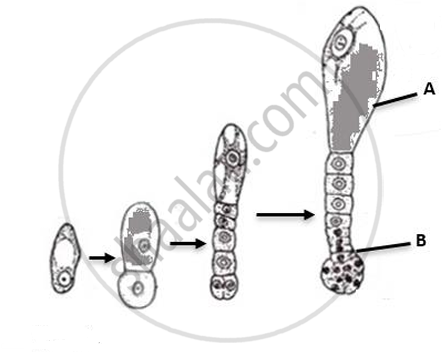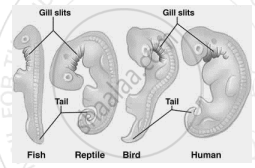Advertisements
Advertisements
Choose the correct options of the following question:
Eyelids in human foetus separate in :
Concept: Pregnancy and Embryonic Development
Give a scientific term for the following:
An act of expelling the full-term foetus from mother’s uterus at the end of gestation.
Concept: Parturition and Lactation
Briefly describe the secretory phase of the menstrual cycle.
Concept: Menstrual Cycle (Ovarian Cycle)
Define: Menarche
Concept: Menstrual Cycle (Ovarian Cycle)
The following question(s)/statement(s) has four suggested answers. Choose the correct option in the following case.
The act of expelling the full-term foetus from the uterus is termed as __________.
Concept: Parturition and Lactation
Differentiate between the following :
Apocarpous ovary and syncarpous ovary
Concept: Microscopic Anatomy of Ovary
Explain Rh factor incompatibility during pregnancy.
Concept: Pregnancy and Embryonic Development
Describe the physicochemical events that take place during fertilization in humans.
Concept: Fertilization and Implantation
Explain the role of hormones during the menstrual cycle.
Concept: Menstrual Cycle (Ovarian Cycle)
Mention any two functions of the human placenta.
Concept: Pregnancy and Embryonic Development
Name the type of antibody that can be transferred through the placenta.
Concept: Pregnancy and Embryonic Development
Mention the location and the function of Leydig cells.
Concept: Human Reproduction > The Male Reproductive System
Given below is the diagram depicting the menstrual cycle in human beings. Study it carefully and answer the questions that follow.

- Which phases are indicated by ‘C’ and ‘D’?
- Name the structures labelled ‘F’. What is its role?
- Explain the changes in the level of progesterone during phases ‘C’ and ‘D’.
- Which hormone present in the urine confirms pregnancy in human beings?
- Identify the structure labelled ‘E’. Name the hormone released by it.
Concept: Menstrual Cycle (Ovarian Cycle)
Match the columns I and II with reference to weeks of pregnancy and the development of a human embryo. Select the correct option from the choices given below:
| Column I | Column II | ||
| I. | 8 weeks | (P) | Limbs and external genital organs |
| II. | 12 weeks | (Q) | Limbs and digits develop. |
| III. | 20 weeks | (R) | Body hair develops. |
| IV. | 24 weeks | (S) | Eyelids separate. |
Concept: Pregnancy and Embryonic Development
Give a reason for the following:
The second half of the menstrual cycle is called the luteal phase as well as the secretory phase.
Concept: Menstrual Cycle (Ovarian Cycle)
The diagram given below shows the various steps in spermatogenesis.

- Name the parts labelled '1', '2' and '3'.
- Name the process by which part '3' changes to part '4'.
Concept: Gametogenesis
In a flower, the megaspore mother cell formed four megaspores without undergoing meiosis. One of the four megaspores developed into the embryo sac. What would be the ploidy level of the antipodal cells in this embryo sac?
Concept: Embryo Development Upto Blastocyst Formation
The diagram given below represents a specific stage of human embryonic development. Identify the stage.

Concept: Pregnancy and Embryonic Development
During embryogenesis in dicots, the zygote divides into a basal cell and a terminal cell. The basal cell divides repeatedly to produce a structure called suspensor. Carefully observe the image given below and describe the function of cell – A and cell – B of the suspensor.

Zygote
Concept: Pregnancy and Embryonic Development
The diagram given below shows the early embryonic stages of fish, reptiles, birds and humans. Though adult reptiles, birds and mammals breathe air, their embryos possess gills. How does this fact support evolution?

Concept: Pregnancy and Embryonic Development
